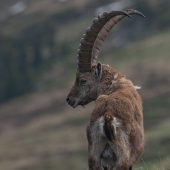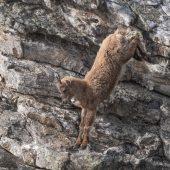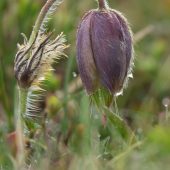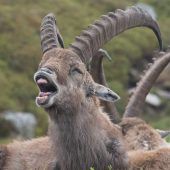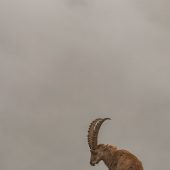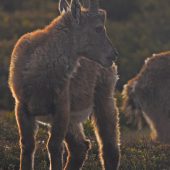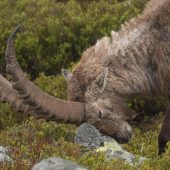Ibex photography in the Swiss Alps with the Nikon AF-S NIKKOR 500mm f/5.6E PF ED VR lens by Peter Lütkes:
In this article I would like to talk about two things: firstly, the attraction of photographing ibexes, ptarmigans and black grouses with nice colleagues in the Swiss Alps, and secondly, what extended possibilities there are with the new AF-S 500 mm 1:5.6E PF ED VR (what a name) from Nikon.
I will not concentrate on the technical details that have already been discussed intensively elsewhere, but will focus on the practical application and the results. The considerations about the optical design and the question whether and under what circumstances the image quality suffers due to the Fresnel technique are of a theoretical nature for me: in practice, the results are outstandingly good and cannot be distinguished from other lenses. It is not only the quality of the optical structure that plays a role, but the performance of the whole system. More about that later.
After several unsuccessful attempts to observe ibexes in the high valleys of South Tyrol, I joined a small group led by Radomir Jakubowski (www.naturfotocamp.de). The aim was to photograph ibex, chamois, ptarmigan and black grouse in another region of the Alps, the Bernese Oberland in Switzerland. His conditions for participation were manageable: readiness for longer hikes and to get up early – that really shouldn’t be a problem for someone who calls himself a nature photographer!
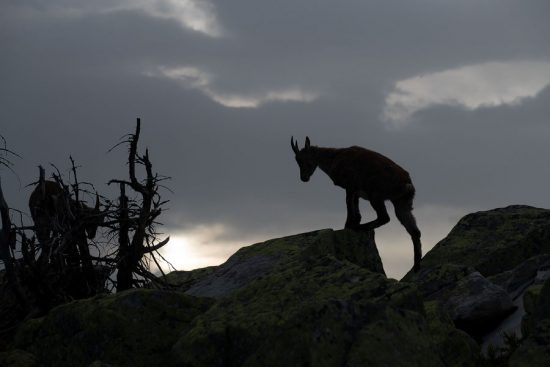
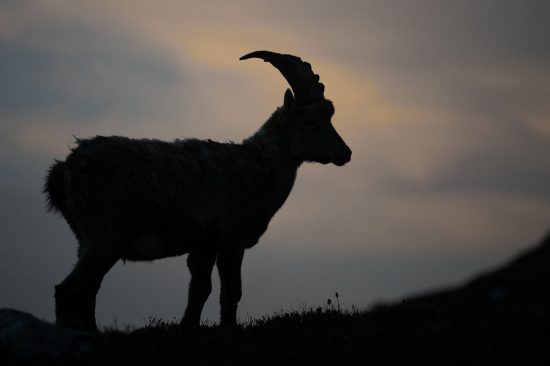
Why ibexes? They are great animals, great to watch and no wonder they were mystically worshipped in the past. There are several species with a complex relationship to each other, e.g. in Spain, Ethiopia, Syria, Siberia and the Alpine region. The Alpine Capricorn lives here in the mountains between the forest line and the ice line and travels many meters in altitude during the day and the course of the year. The ability to climb even the steepest slopes is legendary and always fascinating to look at. Already young animals move with absolute safety on the steepest slopes and use the smallest ledges. What is a practically insurmountable mountain slope for a human being must look like a comfortable staircase for these animals.
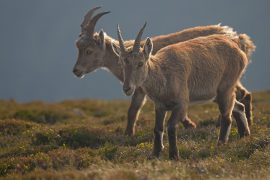
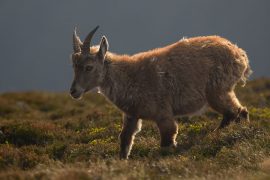
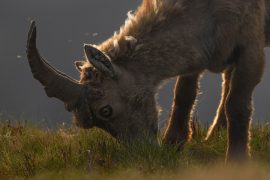
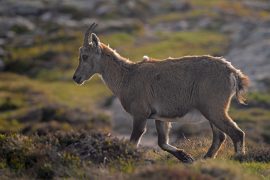
The females live together with the kittens in their own herds, which can easily include 10 to 20 animals. The female animals also take care of the offspring of the others and share the work in an exemplary way! The old bucks are on their way in their own herds and only join the female animals in a rut during the winter, only to leave them again in spring.
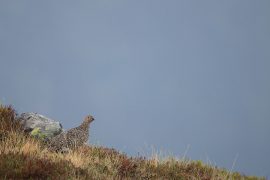
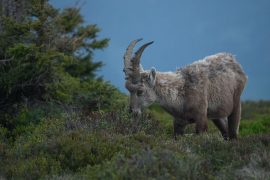
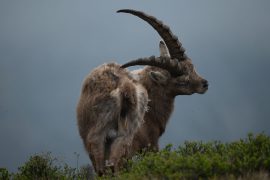
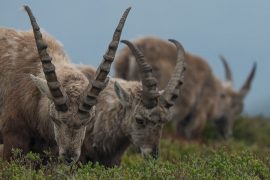
They were, like the European bison, almost extinct, since the worship by humans had the unpleasant side effect that the animals were intensively hunted and processed with skin and bones to medicines of all kinds. At the beginning of the 19th century, there were only about 100 alpine ibex left in the Italian Gran Paradiso National Park. Only through extraordinary private efforts, it was possible to save the species. Nowadays, there are ibex again in Italy (even if you don’t see them there), Austria, Germany and Switzerland. All ibexes living today come from these 100 animals from the Gran Paradiso. Meanwhile, the populations have recovered so well that they are partly hunted again.
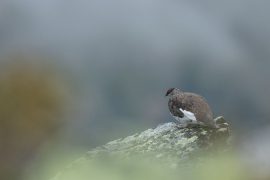

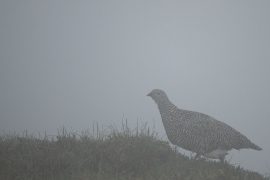
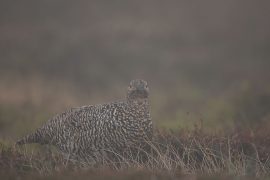
In the Bernese Oberland the conditions are good to see them and above all to photograph them: the tourist infrastructure is – typically in Switzerland – very well developed and above all: the animals are not hunted here. This is different in South Tyrol, for example, and it is the main reason why they are so shy there. Since I had the opportunity last year in Canada to meet Wapitis, bighorn sheep and other mammals in the national parks without any escape distance, and I wanted to make this experience as well with the ibexes.

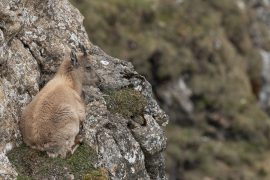
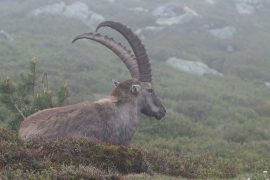
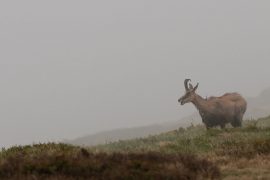
After arrival, we made ourselves comfortable in the accommodation and discussed the next days. Such a photographically dominated tour works only if all participants have the same interests, and this was given here: for good images, everyone was ready to come out of their comfort zone. This is not at any price, so only with the necessary respect for nature and animals, is self-evident or at least should be.

When it started, the different possibilities became clear how to do nature photography with a long focal length: most participants started with “classic” super-telephoto lenses: 2.8/400, 4.0/500 or 4.0/600 were the rule, partly with converters, supported with stable tripods and accommodated in more or less big backpacks. I myself wanted to try out my small equipment on this tour, so I put the Z7 with the 24-70 and the 500 PF on the D850 in the backpack. I’m still fascinated that equipment like this fits into a small backpack, but it works! The reactions of the others were also interesting because most of them confused the 500 PF with the 70-200/2.8 at first.

The encounters with the ibex can be divided into different categories: those with good light and those with bad light. As expected, there were no problems with the 500 PF in good light, neither with the autofocus nor with the handling. The lens was primarily used on the D850 because I noticed a worse performance of the autofocus on the Z7. Whether the new firmware will lead to a significant improvement here will be seen. But I don’t think so, the distance to the D850 is just too big.

The first results on the rear screen were already very promising. But, according to an old photographer’s rule, a lot of light is followed by low light, so it was here. Towards the evening it became cloudier and darker, the shutter speeds dropped to 1/200 and below, the ISO rose to 6400. These are conditions where I would not have had the idea to try it freehand. But it was possible, even without compromising image sharpness. Under constant control on the monitor, you can approach the lower limit of possible exposure times with pinpoint accuracy. The “last” sharp picture came out of the hand with 1/20 sec exposure time. This is still incredible for someone like me who started with slide film and ISO64.

We met several groups of ibex, first a female, which looked after several young animals, then several groups. These came nearer quite quickly and could not be disturbed by us on their migration. Completely relaxed, they grazed in a few meters distance and did not react to slow position changes for a better perspective. Of course one could also overdo it here, but if you avoid fast movements or movements on the animals, you will be rewarded with beautiful encounters.
As it turned out later on the screen of my MacBook, “little light” does not necessarily mean “bad light”: in the evening hours under a cloudy sky the colors were wonderfully warm and the light was soft; best conditions.
The next morning, well before sunrise, we went up the mountain again in the light of the headlamps. At first, the conditions were not quite optimal, because we were standing in high fog (or low clouds), which was too little light for photos, especially before sunrise. Even more critical was the lack of visibility and therefore the limited possibility to find ibex. Suddenly we heard some unknown, creaking calls: an alpine ptarmigan. With a wingspan of approx. 60 cm, these pheasant-like birds are somewhat smaller than their relatives, the grouse (known from the video game). Ptarmigan means that in winter they are completely white and put on a speckled dress with the spring mouse. This makes for almost perfect camouflage and they know it: they do not flee, but rely on the fact that they merge with their surroundings. This is the reason why ptarmigans have no pronounced escape behavior, a very pleasant characteristic from the photographer’s point of view. They don’t fly away either, but run more or less fast in front of you which is always a good possibility for photos. On the way back to the mountain station we saw the ibex again, we walked a few meters past them in the fog in the morning. There are nice pictures of a young animal of about one year, which takes a break in the middle of the rocky slope.
At the end of the tour with slightly more than 2500 photos, including ibex, chamois, black grouse, marmot and some landscape, the conclusion to the usability of the 500 PF can be drawn: Like hardly any other lens so far, the 500 PF opens up new possibilities, which one had not expected before. With the extremely good performance of the image stabilizer you can take pictures from your hand that you wouldn’t do as well with conventional equipment for various reasons. On a hike, the light and short 500 PF gives you a significantly extended radius of action. In addition, there is so much more flexibility on-site compared to a conventional Super-Telephoto lens. Of course, the 500 PF is not as cool as a 4.0/500: you are rather inconspicuous and of course not as respectful as a “real” nature photographer. However, this is clearly put into perspective when you see the results. Sharp pictures from your hand with 1/200, in individual cases also significantly below and that with a 45-megapixel sensor: This gives you a real gamechanger because you get possibilities for taking pictures that were not available before.
Of course, you have to consider that the old rule “There is no free lunch” is not invalidated: Aperture 5.6 is not aperture 2.8, it’s that simple. This means that certain shots just don’t work, that’s for sure. If you sit next to a colleague who uses the 2.8/400, he can open the aperture from 5.6 to 2.8. I can’t do that on the 500 PF. So the conventional long lenses, especially the 2.8/400, will retain their validity. The 500 PF is not a miracle lens, but a wonderful addition, especially for nature photography. It is always said: the best camera is always the one you have with you. This also applies to lenses!
Peter Lütkes is a nature photographer based in Essen, Germany. You can meet him in the wild or on Facebook. Good light all the time, folks!
If you have an interesting idea for a guest post, you can contact me here.
